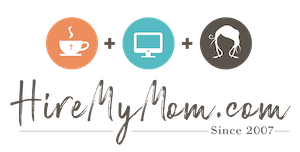How Many Get Hired for Remote Positions? Here’s the Data

The popularity of remote jobs has led to a dramatic increase in applications for these positions. Data shows that for every remote job opening, there are hundreds of applicants vying for the role. This heightened interest can be attributed to the benefits associated with remote work, such as improved work-life balance and the elimination of commuting time. As companies expand their remote work offerings, the competition among applicants has become more intense. Additionally, reports indicate that industries such as tech, marketing, and customer service see the highest volume of remote job applications.
That probably has you thinking…with such a large crowd applying, how can your application stand out?
Hiring Rates for Remote Positions
When it comes to hiring for remote positions, the statistics reveal an interesting pattern. More than half of businesses that operate primarily in a remote capacity are inclined to hire independent professionals compared to those that do not focus on remote work. Specifically, 52.1% of primarily remote businesses hire independent talent. However, landing an interview and securing a position remains competitive.
Employers prioritize candidates with skills that are conducive to remote work, such as proficiency in digital communication tools, self-discipline, and time management. Additionally, experience with remote work or freelance projects can be a significant advantage. Conversely, common reasons for not selecting a candidate include a lack of remote work experience, inadequate communication skills, and failure to demonstrate adaptability and problem-solving abilities. Having experience with remote work or freelance projects is often seen as a significant advantage.
Tips to Secure a Remote Job Interview
Recruiters look for adaptability and problem-solving abilities, essential traits for dealing with the challenges of remote work environments. It is important to establish your familiarity with project management tools and platforms like Slack, Zoom, or Asana can further bolster your appeal. Demonstrating your ability to stay organized and motivated without direct supervision can make a considerable difference in your application.
To improve your chances of securing a remote job interview, emphasize your remote work experience on your resume and highlight your digital communication skills. Include any technical competencies relevant to the position. Customize your cover letter to showcase your enthusiasm for remote work and explain how your background aligns with the company’s needs. This targeted approach can set you apart from other applicants.
Acing the Remote Job Interview
Preparing for a remote job interview involves understanding and highlighting the skills that make you an ideal candidate for remote work. Start by researching the company and understanding its remote work culture. During the interview, ensure you have a quiet, professional environment. Your background should be clutter-free, and the lighting should be adequate to clearly show your face. Dress appropriately, as you would for an in-person interview, to convey professionalism.
Communication is crucial in remote work, so demonstrate your proficiency by speaking clearly and confidently. Maintain eye contact by looking into the camera rather than at your screen. Be ready to answer questions about how you manage your time, handle deadlines, and stay motivated without direct supervision. Share specific examples of past experiences where you successfully worked remotely or independently.
Prepare questions that show your interest in the role and the company, focusing on aspects related to remote work. Inquiring about the team’s communication style, project management practices, and company culture can reflect your preparedness and genuine interest in the position. Finally, follow up with a thank-you email, reiterating your enthusiasm and fit for the role.
Landing a remote job is highly competitive but definitely within reach with the right tactics. Focus on enhancing your resume with relevant skills and experience, particularly those that demonstrate your ability to thrive in a remote environment. In interviews, highlight just how your experience aligns with the company’s wants and needs. Staying motivated and persistent in your job search will significantly enhance your prospects. Keep honing your skills, expanding your network, and preparing thoroughly to stand out in the remote job market.









